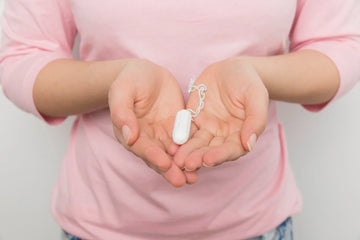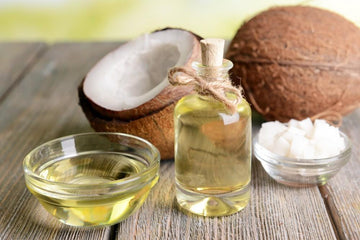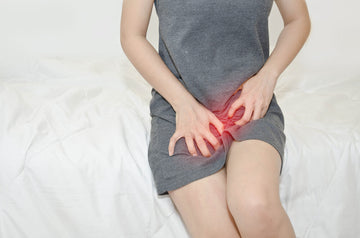Tampons, cylindrical absorbent products, are widely used by individuals worldwide for menstrual hygiene management due to their convenience. However, the prevalent usage of tampons has raised concerns regarding potential side effects. This blog summarizes how tampons are frequently used to regulate menstrual flow. Since tampons are a popular option among people, it's essential to learn about the risks and potential consequences associated with them.
To provide accurate information on the issue and explore other ecologically friendly menstruation care options, the following discussion will shed light on possible adverse effects and fitness concerns associated with tampon use. The more we learn about the complexities of tampon's side effects, the more critical it is to think about sustainable, eco-friendly alternatives for menstruation hygiene to protect people's health and advance feminine care.
The Risks Of Using Tampons
Tampons not only harm, but they can also result in toxic shock syndrome. Analyze the potential drawbacks of using them, promoting consideration of safer alternatives and an ongoing approach to personal hygiene.
Tampon's Side Effects Include TSS, Infections, And Allergies
The use of tampons raises several problems, such as the risk of bacterial infections, allergic responses, and toxic shock syndrome. Toxic shock syndrome is a rare but dangerous adverse effect of long-term tampon usage. Using tampons can also disrupt the vagina's natural flora, raising the possibility of bacterial infections. Additionally, unpleasant and irritating reports of allergic reactions to tampon components have been made. This section delves into these common side effects, emphasizing the importance of choosing feminine hygiene products with awareness and consideration for one's health.
Statistics On The Prevalence Of Tampon Side Effects
Statistics indicate that the usage of tampons may have beneficial unintended consequences that are currently not negligible damage. For example, one in every 100,000 individuals who are menstruating has toxic shock syndrome annually. On the other hand, data indicates that between 1% and 4% of consumers report allergic reactions or discomfort. Even if these figures may seem low, the seriousness of the anticipated problems warrants consideration. Moreover, underreporting and symptom variability impede the accuracy of the estimate. Although such negative results are statistically rare, education and attention can encourage menstrual fitness and safer female hygiene practices.
Tampon Side Effect On The Environment
Tampons have a significant environmental impact because of their non-biodegradable material and resource-intensive manufacturing methods. Examine environmentally appropriate substitutes for long-term menstrual hygiene solutions.
Tampons Made With Plastic Are Wasteful And Harmful
Regular tampons significantly contribute to environmental concerns because of the excessive entrance of trash and the use of plastic. The fact that tampons are often individually wrapped in plastic and include plastic applicators contributes to pollution. Tampon-related trash accumulates in landfills, exacerbating environmental harm since it doesn't biodegrade. The making process uses resource-intensive transportation and manufacturing procedures, adding to the carbon footprint. As awareness of environmental issues grows, it is imperative to investigate eco-friendly alternatives to mitigate the adverse effects of traditional tampons and promote sustainable feminine hygiene practices for a healthier global community.
Converting To Environmentally Friendly Alternatives
Switching to eco-friendly feminine hygiene products is essential to reduce environmental harm and advance sustainability. Reusable cotton pads and menstruation cups can assist individuals in lessening their influence on the environment, reducing plastic pollution, and producing less waste. Choosing eco-friendly substitutes contributes to the substantial funding needed to halt global warming and protect natural resources. Since it is better for the environment and provides people the power to make their own decisions, this option is a great way to make the earth a better place for coming generations.
Eco-Friendly Alternatives to Traditional Tampons
Reusable pads, organic tampons, and menstrual cups are a few additional eco-friendly solutions for menstrual care that encourage sustainability and have a lower environmental effect than standard tampons.
Menstrual Options: Cups, Cloth Pads, Organic Tampons.
Consider using eco-friendly menstrual napkins instead of traditional tampons. Menstruation cups provide long-lasting, reusable comfort. Reusable cotton pads offer a machine-washable, environmentally friendly substitute. Natural cotton tampons give equal weight to effectiveness and environmental concerns. These alternatives reduce waste and promote a more sustainable and thoughtful approach to maintaining feminine hygiene. Making informed decisions encourages people to put their health and the environment first, which enables more environmentally and health-conscious menstrual hygiene practices.
Eco-Friendly Menstrual Products: Healthier, Greener
Choosing menstrual products that are ecologically friendly benefits the environment and promotes health by lowering exposure to dangerous substances. Menstruation cups and cotton pads are two reusable options that reduce waste and environmental impact compared to disposable items. By protecting human health and encouraging environmentally conscious decision-making for a more sustainable, better future, choosing such options is consistent with sustainability goals.
Tips For Transitioning To Eco-Friendly Menstrual Products
Switching to ecologically friendly menstrual products would be simple if you follow these suggestions. Please take a look at a few options and gradually include them in your routine, in addition to using natural pads or menstrual cups. Reliable sources like neighborhood shops, online directories, and eco-friendly items influence your decisions. Learn about customer perspectives and product assessments to make informed decisions. Use this shift for a more sustainable, healthy menstrual cycle. You may also support organizations that live sustainably and employ eco-friendly practices.
Conclusion
Finally, understanding the negative impacts of tampons highlights how important it is to seek out safer alternatives. A sustainable and environmentally conscious lifestyle is promoted by making environmentally beneficial decisions like using menstrual cups or reusable pads, which also lessen the health risks of frequent tampon use. People now possess the ability to make choices that prioritize both their own and global health. By highlighting the risks and supporting environmentally friendly substitutes, we help change menstrual hygiene habits positively, resulting in a healthier and more sustainable approach to feminine care. Bliss Natural sanitary napkin brand provides high-quality feminine hygiene products that combine confidence, sustainability, and comfort. Upgrade your women's care routine with our carefully developed products for the highest level of well-being and confidence.






